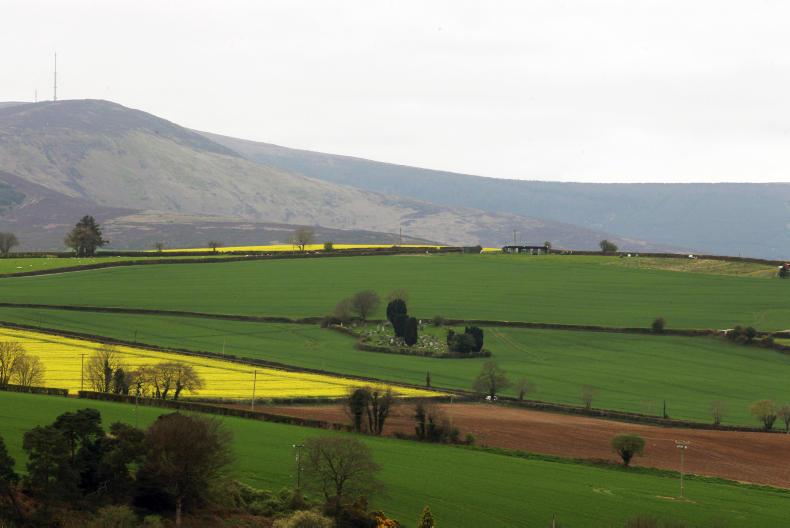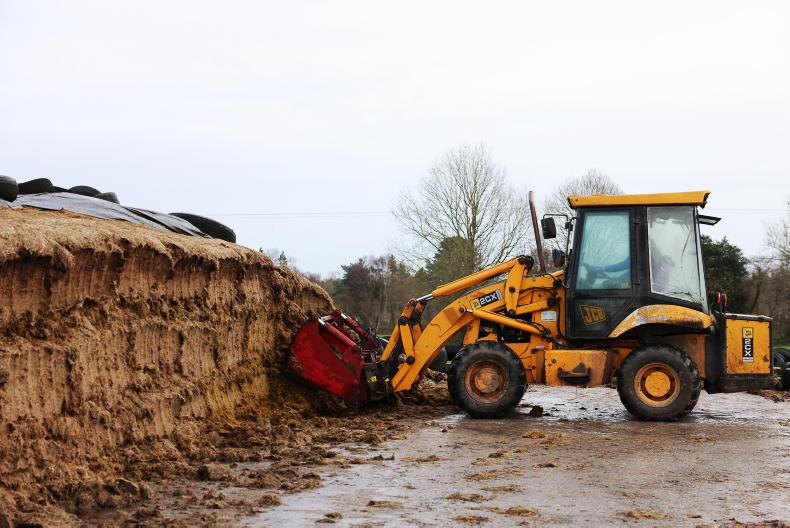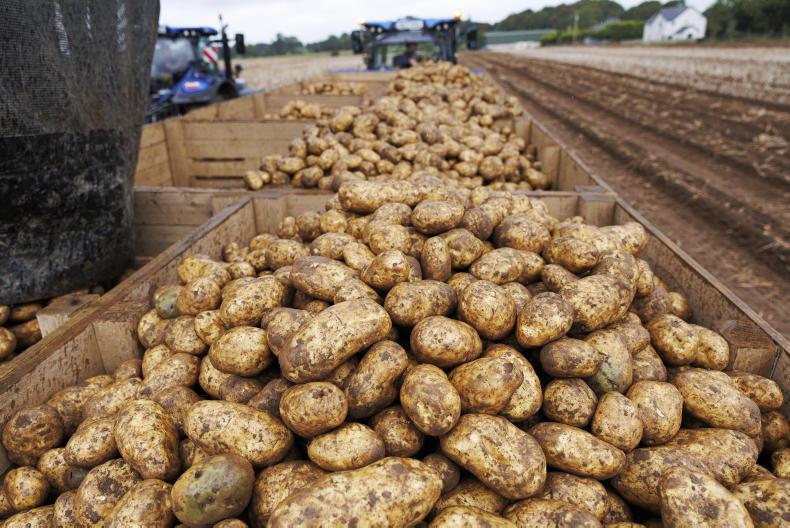The value of roadways and multiple access points is coming into its own in this weather. Down in Kerry this week, some farmers were splitting herds in two and grazing for four or five hours at a time to reduce the pressure on the land. Some damage was being done, even after two hours of grazing, but the farmers weren’t one bit concerned, as it will all recover fine. The recovery is aided by having soil fertility right, particularly phosphorus. The value for them was being able to get grass into cows and to set the farm up for grazing next spring.
They weren’t letting cows out to grass when full of silage. They weren’t giving them full paddocks and letting them walk grass into the ground. They were finding the right paddock to put them into and they were getting them off when they had their job done.
On the really heavy parts, they feel you need to have a roadway within 50m of the furthest point in the field. That roadway might only be a path the bare width of a cow, but it’s enough to get cows moving without doing damage to fields. Herds that have been housed should be fed the best-quality silage available, but keep in mind that you’ll need some good bales for next spring too. Some farmers like to have one bale of good-quality silage per cow for spring.
Low body condition score (BCS) wasn’t an issue last autumn, as cows were fed a lot of meal over the summer and the autumn was very kind. It’s a different story this year and some herds or some cows within herds are getting thin. It needs to be managed.
Treat any cows for lameness as soon as possible. Don’t let it linger at this time of year and during this weather
Wet weather and wet roadways strip condition off cows, particularly in larger herds where the walking distances are greater. Run cows through a crush and record the numbers of thin cows. For me, a cow at 2.75 or below now is one to record. Find out if she is in-calf and, if so, when she is calving. If before mid-March, then she will need special treatment. That could be a longer dry period, put on once-a-day milking now or fed meals over the dry period. Feeding meal in the dry period is probably the most costly method.
Manipulate the dry period length to get the BCS up to 3.25 for calving. Depending on circumstances, alternating long walks could be an option. Treat any cows for lameness as soon as possible. Don’t let it linger at this time of year and during this weather.
Environmental legislation is moving towards using less chemical fertilisers, particularly nitrogen, which has a high carbon footprint and is very mobile in the soil so is subject to leaching. The evidence so far is that if you want to grow high quantities of grass at reduced nitrogen rates, then you need to have legumes such as clover in the sward. It’s a difficult plant to manage, but at the moment it’s the only thing I know that can offer more pasture growth, higher milk production and reduces the costs of production. The flip side is it requires more management skill.
Read more
Coughing cattle and mycoplasma
Science behind mineral supplementation
The value of roadways and multiple access points is coming into its own in this weather. Down in Kerry this week, some farmers were splitting herds in two and grazing for four or five hours at a time to reduce the pressure on the land. Some damage was being done, even after two hours of grazing, but the farmers weren’t one bit concerned, as it will all recover fine. The recovery is aided by having soil fertility right, particularly phosphorus. The value for them was being able to get grass into cows and to set the farm up for grazing next spring.
They weren’t letting cows out to grass when full of silage. They weren’t giving them full paddocks and letting them walk grass into the ground. They were finding the right paddock to put them into and they were getting them off when they had their job done.
On the really heavy parts, they feel you need to have a roadway within 50m of the furthest point in the field. That roadway might only be a path the bare width of a cow, but it’s enough to get cows moving without doing damage to fields. Herds that have been housed should be fed the best-quality silage available, but keep in mind that you’ll need some good bales for next spring too. Some farmers like to have one bale of good-quality silage per cow for spring.
Low body condition score (BCS) wasn’t an issue last autumn, as cows were fed a lot of meal over the summer and the autumn was very kind. It’s a different story this year and some herds or some cows within herds are getting thin. It needs to be managed.
Treat any cows for lameness as soon as possible. Don’t let it linger at this time of year and during this weather
Wet weather and wet roadways strip condition off cows, particularly in larger herds where the walking distances are greater. Run cows through a crush and record the numbers of thin cows. For me, a cow at 2.75 or below now is one to record. Find out if she is in-calf and, if so, when she is calving. If before mid-March, then she will need special treatment. That could be a longer dry period, put on once-a-day milking now or fed meals over the dry period. Feeding meal in the dry period is probably the most costly method.
Manipulate the dry period length to get the BCS up to 3.25 for calving. Depending on circumstances, alternating long walks could be an option. Treat any cows for lameness as soon as possible. Don’t let it linger at this time of year and during this weather.
Environmental legislation is moving towards using less chemical fertilisers, particularly nitrogen, which has a high carbon footprint and is very mobile in the soil so is subject to leaching. The evidence so far is that if you want to grow high quantities of grass at reduced nitrogen rates, then you need to have legumes such as clover in the sward. It’s a difficult plant to manage, but at the moment it’s the only thing I know that can offer more pasture growth, higher milk production and reduces the costs of production. The flip side is it requires more management skill.
Read more
Coughing cattle and mycoplasma
Science behind mineral supplementation










SHARING OPTIONS